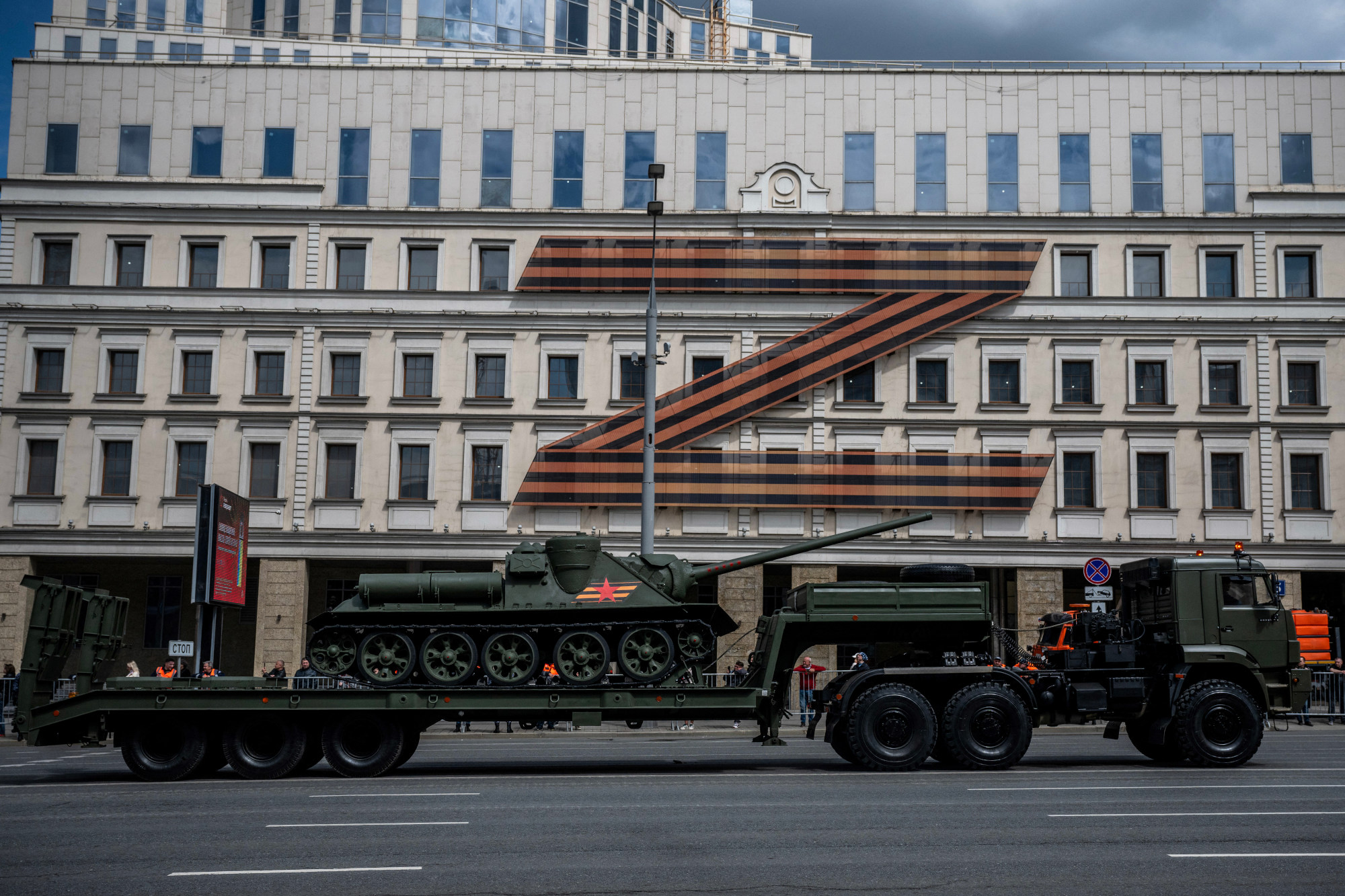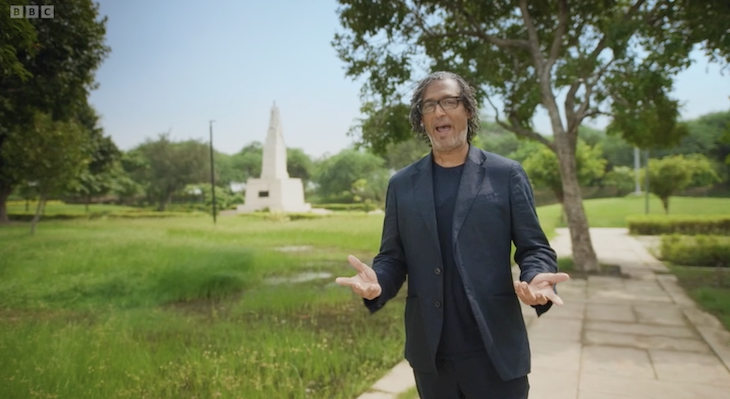Russia’s Victory Day celebrations on 9 May should mark a triumphal double apotheosis for Vladimir Putin. Not only will it be the 25th Victory parade since the beginning of his presidency, but is also the 80th anniversary of the Soviet defeat of Nazi Germany, which Putin has appropriated as a fundamental ideological pillar of his regime. Yet instead of marking the absolute high point of Putin’s reign, the traditional military parade on Red Square will be shadowed by jeopardy and haunted by the ghosts of future failure.
The Russians are apoplectic that Zelensky has so far ignored the unilateral three day ceasefire around Victory Day that Putin proposed last week
For one, many of the world leaders Putin had hoped would attend have chosen to stay away. India and Pakistan’s leaders, understandably, will be too busy planning their own imminent war to commemorate a past one. South Africa and Iran, touted as new strategic allies of Moscow, will be represented by lowly officials. Of the Europeans, Viktor Orban won’t be coming and only Slovak PM Robert Fico and Serbian President Aleksandar Vučić have shown up – and Vučić’s plane had to reroute through Azerbaijan after Latvia and Lithuania blocked their air-space. The only big beast present will be China’s Xi Jinping, on his eleventh visit to Russia.
More alarmingly, though, Moscow is facing the most serious and concerted attack by Ukrainian drones ever launched. Social media is full of footage of airplane-like Unmanned Aerial Vehicles (UAVs) cruising the skies over suburban Moscow, pursued by Russian Air Force jets. All of Moscow and St Petersburg’s major airports were closed after drone warnings, stranding tens of thousands of passengers. Anti-drone jamming blocked citywide mobile internet in the capital, causing chaos.
The Ministry of Defence reported that Russian air defences had shot down 524 Ukrainian drones on 7th May alone. And while all available anti-aircraft rocket batteries have been mobilised to defend the capital during the great May Day victory parade, Ukrainians have taken advantage of the temporary vulnerability to hit targets away from Moscow.
Satellite data from NASA’s Fire Information for Resource Management System has confirmed fires at an optical fibre plant in Saransk, at Shaykovka military airfield in the Kaluga region where Tu-22 long range bombers are based, as well as at Kubinka military airfield near Moscow. The Splav plant in the Tula region which produces Grad, Uragan, Smerch, Tornado, and TOS-1A Solntsepek rockets was also attacked, as was a nearby Basalt factory that makes components for guided munitions. The Murom Instrument-Making Plant near Vladimir, which produces fuses for various ammunition, was also set ablaze.
Not a bad bag for a single day’s attacks. Or as Ukraine’s President Volodymyr Zelensky put it, ‘our forces are bringing justice to Russia’s doorstep, targeting the tools of their terror.’
The Russians are apoplectic that Zelensky has so far ignored the unilateral three day ceasefire around Victory Day that Putin proposed last week. Kremlin propagandists had until recently been predicting that Russia would be celebrating a ceasefire in Ukraine on May 9th – which they would have undoubtedly presented as a capitulation. Instead, Putin is facing the very real possibility that a stray Ukrainian drone could humiliate him in the heart of his own capital at the very moment he had hoped to celebrate his greatest glory.
It’s too early, though, to call Ukraine’s successful drone attacks a turning point in the war. Though domestic production and development of long-range UAVs have proceeded in leaps and bounds, the basic technology of even the most successful of Ukraine’s drones are not much more advanced than German V1 rockets of the 1940s – except they are powered by small engines instead of rockets. Though Ukraine does produce some sophisticated cruise missiles, such as the naval Neptune system that sank the battle cruiser Moskva, flagship of the Russian Black Sea Fleet, their range is limited.
Russia, by contrast, has some of the world’s most sophisticated missile technology. That includes ballistic rockets like the brand-new Oreshnik that travel into orbit before breaking into re-entry vehicles that strike their targets at up to nine times the speed of sound, as well as aircraft-launched hypersonic cruise missiles like the Kinzhal. Though costing tens of millions per missile, Putin has used Oreshniks on an Ukrainian missile factory in Kryvyi Rih – and may well use them again to hit Kyiv in anger at the latest spate of attacks.
For the time being, Ukraine does not yet have anything like the firepower to inflict much more than symbolic damage on Russia – especially as the long lull before the most recent attacks suggests that Kyiv has been saving up every drone it can produce for this Victory season spectacular.
But in war, symbols are important. Putin’s regime has been successful at linking the memory of the second world war – or the Great Patriotic War, as Russians call it – to his current war on Ukraine. But while Kremlin propagandists may persuade ordinary Russians that Kyiv is ruled by Nazis and that Putin is protecting them from encroaching fascism, persuading them to make serious sacrifices for the sake of the war is a very different proposition. For the vast majority of Russians, the Ukraine war is no more real than the cosplaying schoolchildren dressed in Soviet uniforms. Massive war spending has brought an economic boost to many depressed regions, and soldiers who volunteer for service in Ukraine provide fat salaries and enormous death payments. But so far Putin has not had to mobilise unwilling soldiers – except for a limited call up of military reservists in September 2022 that triggered such a backlash that the Kremlin has not dared attempt it again.
What the Putin regime has not prepared the Russian people for is for the war to hurt. In that sense, Putin and Zelensky are fighting very different wars. Ukraine is struggling for its very survival, with every town and city sustaining catastrophic damage. Even Ukrainians who favour a ceasefire know that they have no choice but to fight on until Putin stops attacking. For all but the most fanatical Russians, on the other hand, the war is an abstract ideological project fuelled by a not-very-coherent brew of Soviet nostalgia, solidarity with oppressed fellow Russians in Ukraine, and restoring their country’s standing in the world. What it is not is a life-or-death struggle for national survival of the kind that their grandparents faced in 1941.
That is what makes Ukraine’s Victory Day drone swarm potentially dangerous for Putin. Falling oil prices are seriously depressing his economy. Combine that with a stalled war on the ground and regular Ukrainian attacks on factories, oil refineries and military bases across European Russia, and suddenly it’s not just the Kremlin’s ability to provide bread and circuses that ordinary Russians will doubt but its ability to provide basic security.
Ukraine’s economy is certainly in far worse shape than Russia’s. It is military weaker and its offensive attack capacity for the moment is far inferior to Moscow’s. Yet in important ways it is Russia that is more vulnerable to a change in the war’s vector. Putin’s greatest weakness is the war coming home to ordinary Russians. Kyiv’s best chance of stopping its stronger adversary is to do exactly that.









Comments